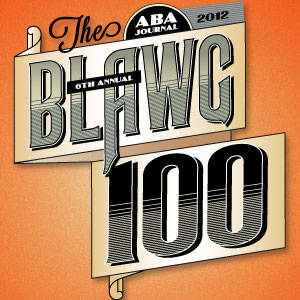The White Zombie is American Law and Corporate Control (FDR revisited)
A newspaper ad from 1932 for the first zombie movie, White Zombie, starring Bela Lugosi:
Under the category AMUSEMENTS:
“WHITE ZOMBIE,” LOEW’S
It is in Haiti that the abracadabra and mumbo-jumbo, or ouanga, meaning in English a charm or spell, reaches its height. So much so that the government of the Black Republic has been compelled to add law to the criminal code.
EXCUSE ME? WHAT? “compelled to add law to the criminal code” ??? I don’t see that in the movie’s wikipedia plot description.
The advertisement continues with the traditional movie ad details:
“White Zombie,” a motion picture distributed by United Artists, tells the story of the Zombies or “walking dead man” of the island, which is now at Loew’s.
“White Zombie” is interpreted by a company of well-known players, with Bela Lugosi, famous Hungarian actor and Madge Bellamy. Joseph Cawthorn gives the humorous touch to an otherwise sinister production.
And there is a picture advertisement on the same newspaper page:

You can watch “White Zombies” streaming on Netflix – its only 66 minutes (although wikipedia says original was 74 minutes) and it is also apparently available free stream at archive.org:
http://www.archive.org/embed/WhiteZombie
The movie opens from the beginning with a “cheerful introduction to the West Indies” explaining about four minutes in:
“they are not men, monsieur, they are dead bodies … zombi, the living dead, corpses taken from their grave, made to work in sugar mills and fields at night”
See also this January 2011 blog: “Zombies: Industrialized Alienation in the New World”: writing:
One of the most striking scenes early in White Zombie is a visit to a sugar mill where we see the zombified workers dumping raw sugar cane, as well as operating the mill. Their movements are robotic; the faces are without expression; the workers are utterly dehumanized.
And it turns out that the movie does have a scene involving a discussion of Haitian law. The movie references a Haitian penal code supposedly passed because of zombies, explaining that it would still be considered murder even if the victim rises from his grave. This was apparently a considerable problem but it also seems to have something to do with putting these “living dead” into forced labor.
Meanwhile I am thinking again about FDR’s involvement in Haiti that I already reported on in a recent ZombieLaw post: “Franklin Roosevelt’s Zombies”
In that post I told you about a newspaper article that claimed FDR did battle with zombies when he drafted the Haitian constitution (in 1917). So it turns out that modern fact checkers dispute FDR’s claim that he wrote the Constitution of Haiti. In fact, his biographers now use that claim as proof of FDR’s pervasive exaggeration and self-aggrandizement. It is true that he did once claim that he wrote it but he did not actually write it. See this blog, “FDR Did Not Write the Constitution for Haiti” and see Fredrick B. Pike’s book “FDR’s Good Neighbor Policy”. Pike writes:
The claim to have written the Haitian constitution was a bald-faced lie, and when Republicans leapt to take advantage of the gaffe, shedding crocodile tears over what they referred to as the “rape of Haiti,” FDR falsely claimed he had been misquoted.
Luckily, FDR didn’t have to contend with YouTube politics. David Pietrusza in “1920: The year of the Six Presidents” writes:
In reality, FDR hadn’t written Haiti’s constitution, but if he had, he should have kept his mouth shut about it … his timing was incredibly bizarre: news had just broken of a series of Marine massacres in Haiti.
According to Wikipedia, the US occupation of Haiti:
The United States occupation of Haiti began on July 28, 1915, when 330 US Marines landed at Port-au-Prince on the authority of U.S. President Woodrow Wilson to safeguard the interests of U.S. corporations. It ended on August 1, 1934 after Franklin D. Roosevelt reaffirmed an August 1933 disengagement agreement.

Even if FDR didn’t personally write the Haitian constitution, he was surely at least minimally involved given his position and that in “Early 1917: US and Haitian Lawmakers Argue over New Constitution for Haiti”:
The US drafts a constitution for Haiti, which notably excludes a provision from the country’s previous constitution which had prohibited foreign ownership of land. Under the US-drafted constitution, foreign investors would be able to purchase fertile areas and establish sugar cane, cacao, banana, cotton, tobacco, and sisal plantations. But the Haitian legislature finds the US-proposed constitution unacceptable and continues working on a new document which would reverse the terms of the 1915 treaty (see November 11, 1915), giving control of Haiti back to its own government, and which would leave the previous constitution’s land restrictions intact. When a copy of the document is sent to Washington, it is quickly rejected by the US State Department which complains that it is “unfriendly” and instructs that its passage be prevented.
Then the US Marines got involved “to dissolve the Haitian legislature”. US Marine Smedley Butler is quoted as justifying the military action “to end the spirit of anarchy which animates it [the Haitian legislature].” Later “Butler became an outspoken critic of the business interests in the Caribbean, criticizing the ways in which U.S. businesses and Wall Street bankers imposed their agenda on United States foreign policy during this period.” (see Butler in Wikipedia, citing to Maverick Marine: General Smedley D. Butler and the Contradictions of American Military History, By Hans Schmidt, 1998)
And then on “June 12, 1918: US-Backed Constitution Approved in Haiti; Turnover Is Very Low” – enacted by a landslide but with only “less than 5 percent of Haiti’s population participate in the vote” – June 19, 1918: New Constitution Becomes Effective in Haiti but “Real power remain with the US occupiers”. And from “Late 1918-1920 Haitians Rebel against US-Backed Law” particularly angry about “a US-instigated law requiring forced labor” – “in some cases workers are forced to work bound with ropes for weeks and even months. The practice reminds Haitians of their slavery under the French and inspires a rebellion in 1918”
US forces are called in to repress the rebellion in March of 1919. For the first time ever, airplanes are used to support soldiers. The fighting continues until November 1920. The official US record of casualties shows that thirteen US soldiers and 3,071 Haitians are killed.
For further history see the links above to historycommons.org or go to book cited, from 1994, A Brief History of the Caribbean: From the Arawak and the Carib to the Present by Jan Rogozinski.
Note also that FDR was the Assistant Secretary of the Navy from 1913-1920 – he resigned to run and lose a bid for Vice Presidency but his resignation was also overshadowed by his involvement in the Newport sex scandal. Nevertheless, he still went on to become President. Seems amazing that these scandals did not stop his political career.
Also, the 1918 Constitution de la Republique of Haiti can be found online but it is in French so I am not sure about the provisions FDR supposedly included against zombie disinterment, as mentioned in the 1934 newspaper article that I wrote about previously. Of course, by the time of that article, there was a new 1932 Constitution in Haiti and The US occupation was ending. 1932, The same year United Artists released the movie “White Zombie”
On the surface White Zombie is a zombie movie (or perhaps almost moreso a vampire movie). But there are strong subtexts about corporate influence, autonomy for females and laborers, and American-style law. America would make a zombies of Haitians. FDR would even brag that he had their League of Nations vote in his pocket. So the corporations can make zombies of us all…







Trackbacks & Pingbacks